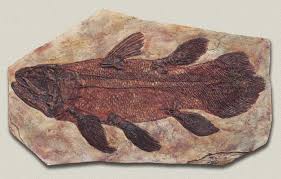Fossils Of Coelacanth:

A group of paleontologists has discovered fossils of the coelacanth, a giant fish regarded as an iconic example of a “living fossil.”
- The discovered fossil of Coelacanth is believed to be 66 million years old belonging to the Cretaceous era.
- Coelacanths are elusive, deep-sea creatures, living in depths up to 2,300 feet below the surface.
- These were thought to have gone extinct with the dinosaurs 65 million years ago.
- But its discovery in 1938 started a debate about how this lobe-finned fish fits into the evolution of land animals.
- There are only two known species of coelacanths: one that lives near the Comoros Islands off the east coast of Africa, and one found in the waters off Sulawesi, Indonesia.
- Living Fossil is an organism that has remained unchanged from earlier geologic times and whose close relatives are usually extinct.
- Other than Coelacanth, Horseshoe crab and ginkgo trees are examples of living fossils.
- However, in their new study, paleontologists have found that Coelacanths gained 62 new genes through encounters with other species 10 million years ago.
- This suggests that they are actually evolving, albeit slowly
- IUCN Status: Critically Endangered
- Sulawesi Coelacanth is listed as ‘vulnerable’.
- CITES Status: Appendix I




